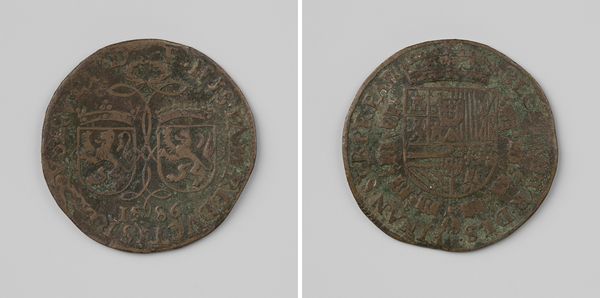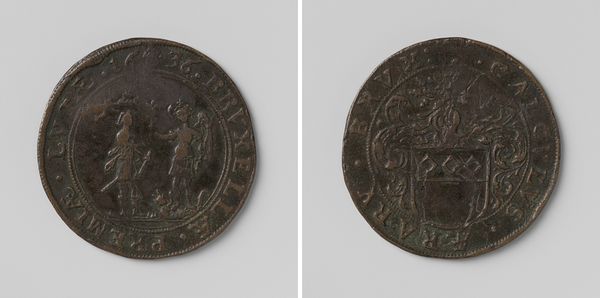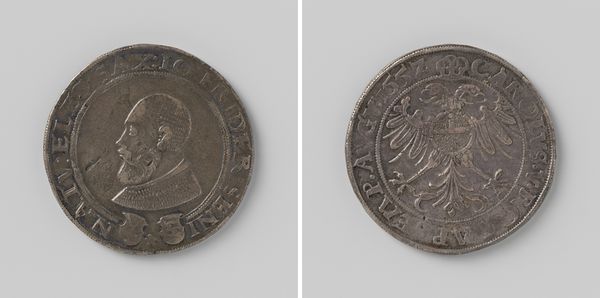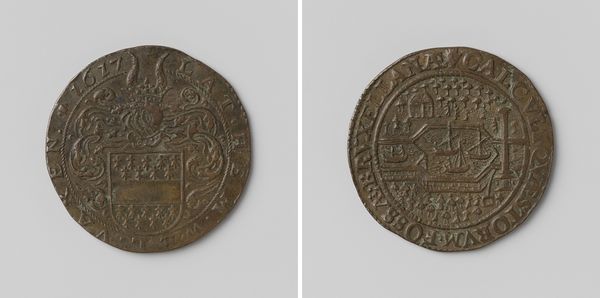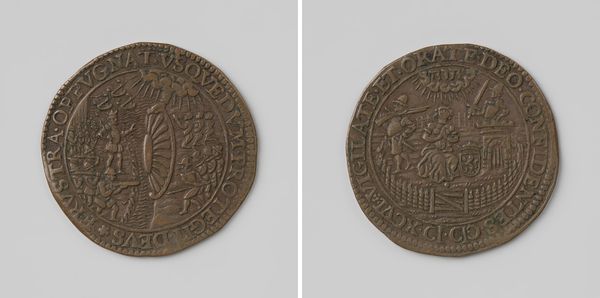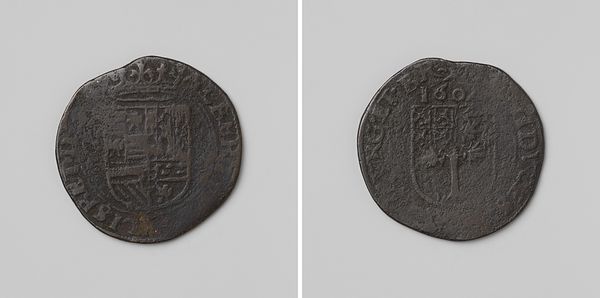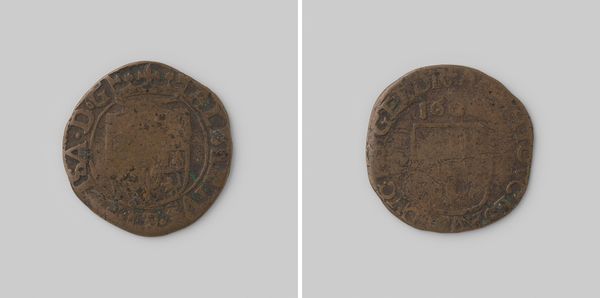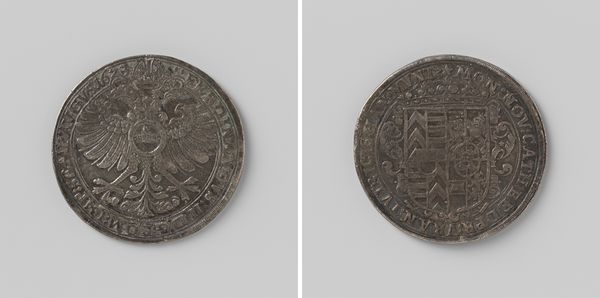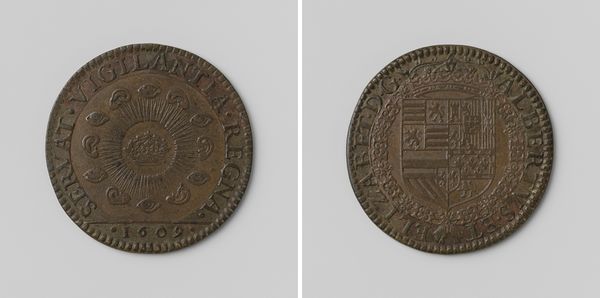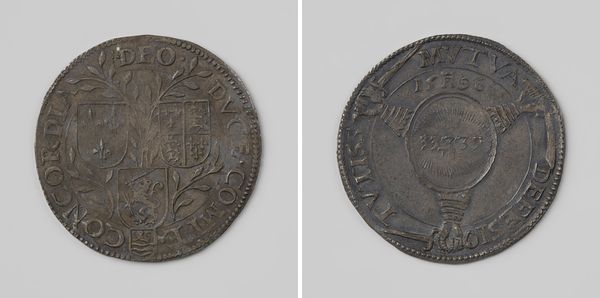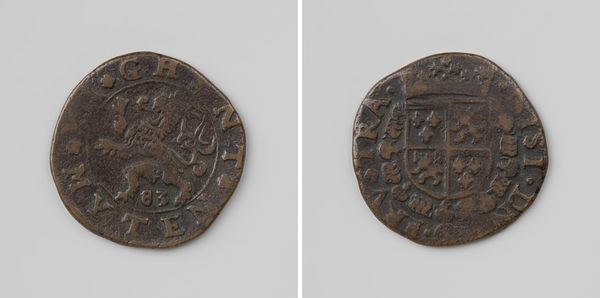
Sluiting van het drievoudige verbond tussen Engeland, Frankrijk en de Republiek 1598
0:00
0:00
metal, bronze, engraving
#
portrait
#
medieval
#
metal
#
bronze
#
ancient-mediterranean
#
history-painting
#
engraving
Dimensions: diameter 2.8 cm, weight 50 gr
Copyright: Rijks Museum: Open Domain
Curator: The piece we're looking at today is a bronze engraving from 1598 titled "Sluiting van het drievoudige verbond tussen Engeland, Frankrijk en de Republiek"—or, "The Closing of the Triple Alliance between England, France, and the Republic." Editor: Immediately, I'm struck by its almost mournful appearance. The darkened bronze, the slightly corroded texture... it speaks of a history weathered by time, almost like a burial marker commemorating something lost. Curator: Yes, but I also see celebration! This engraving serves as propaganda, immortalizing a critical moment of political maneuvering, aligning nations and, for a fleeting time, redrawing the European power map, so to speak. Editor: Right. So much of statecraft and war boiled down to imagery— the iconography becomes crucial. Three prominent shields leap forward, surmounted by heraldic imagery, while wreaths symbolizing victory encircle the scene. A language understood then, perhaps cryptic now. Curator: The triple alliance was hugely impactful! Consider the Protestant ascendancy that this signaled against Hapsburg and Papal ambition; and how it shifted global economics away from the Iberian powers! It's a visual declaration that those shifts in global power had been validated. Editor: The reverse side bears further symbolic burden, with swords and inscriptions intertwined, I note the lettering in a tight, looping script – all reinforcing ideas of strength, accord, and divine blessing, all presented on a round medallion. The circle reinforces wholeness and agreement. But that dark bronze still tells a story too, beyond just the intended message. It hints at decay, perhaps, even the eventual fracturing of that accord. Curator: I would only add how gender plays into it. Nations allegorized, relationships enacted in overtly masculine terms. The implications reverberated outward through society in the early modern era. Editor: That patina invites questions not just about the depicted historical power dynamics, but what survives to tell the tale and who gets left behind, what memories survive and endure? Curator: Exactly! By situating it among theoretical works concerning early modernity, we bring forward the nuance embedded within objects such as this. The material, in the end, serves as a starting point to contextualize the time period and broader themes in history. Editor: An echo from history, forever caught in metal.
Comments
No comments
Be the first to comment and join the conversation on the ultimate creative platform.
